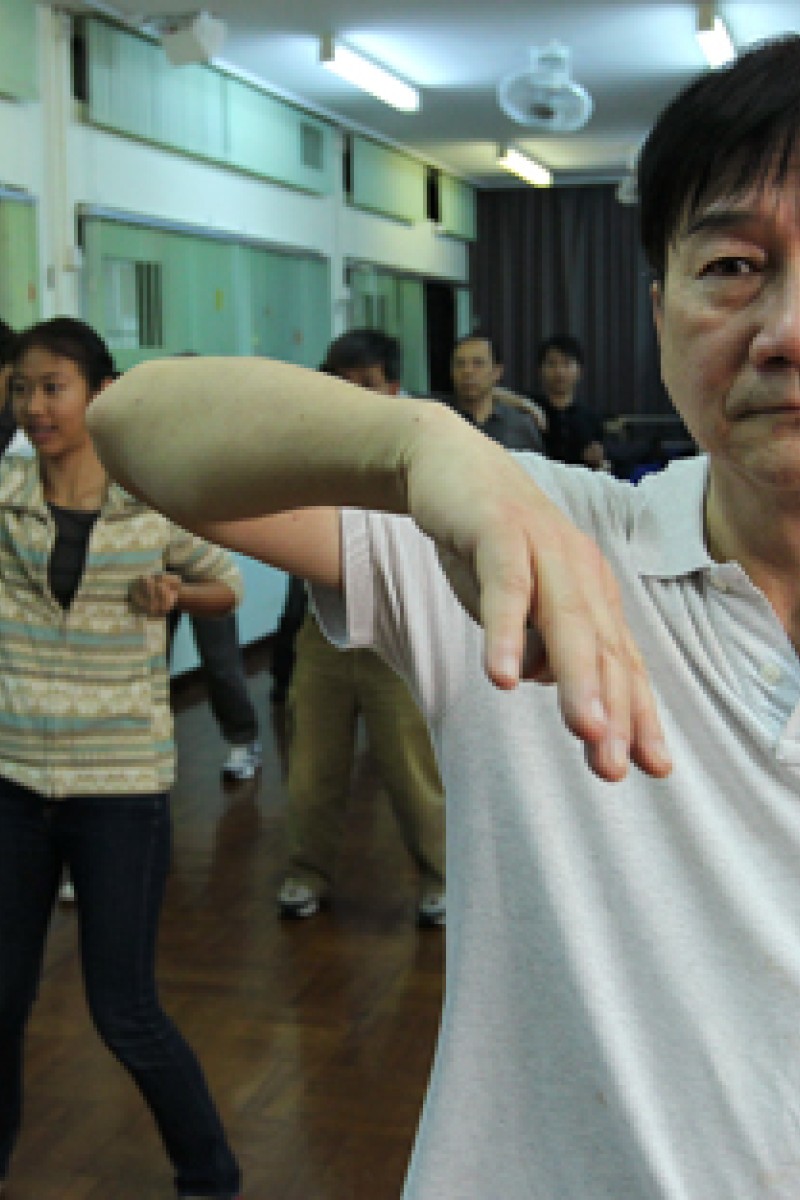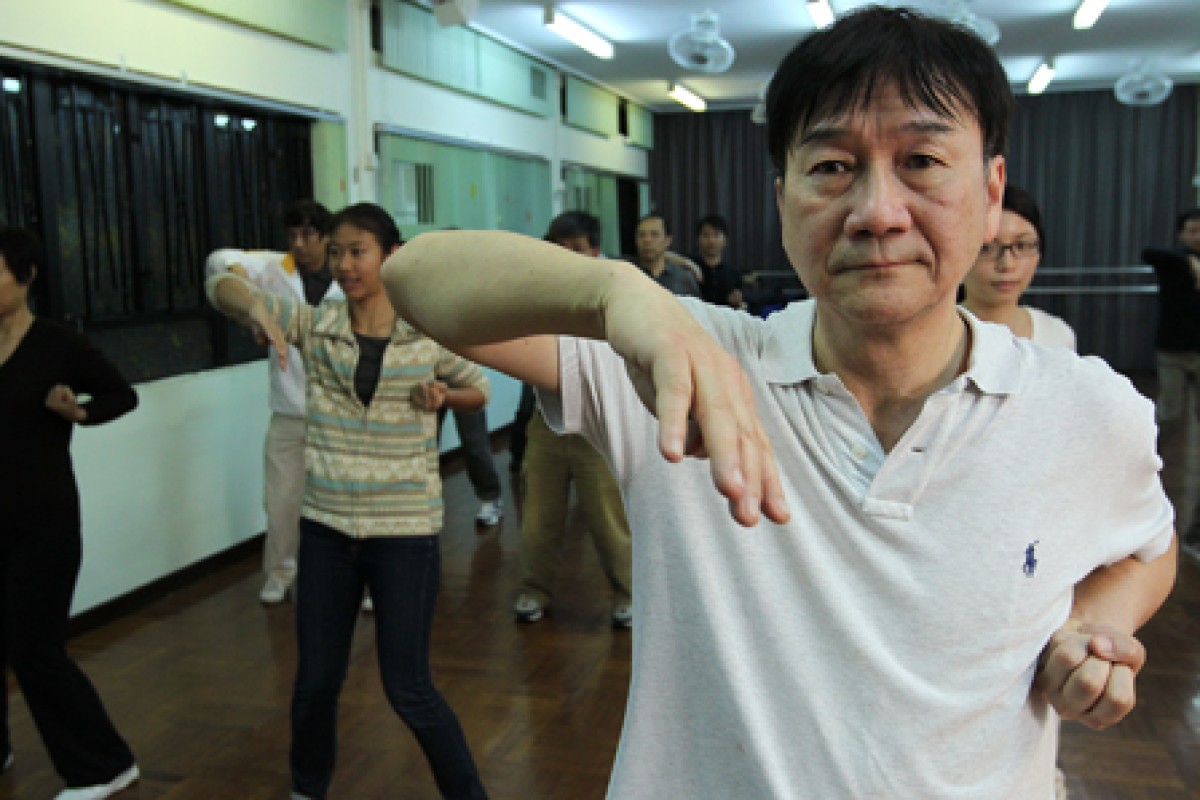
A retired teacher continues to give free classes in Chinese martial arts
 Roland Kong (right) teaches wing chun at Holy Cross Lutheran School in Tsuen Wan.
Roland Kong (right) teaches wing chun at Holy Cross Lutheran School in Tsuen Wan.Kong started training in the form of self-defence with master Leung Sheng - the first Hong Kong disciple of legendary martial artist Yip Man - after being introduced by a Form Seven classmate.
"My friend learned only for a few months," Kong says. "But I learned for nine years."
Kong used to practise about 10 hours a week during those nine years, delicately balancing his love of wing chun with his teaching while also studying for a postgraduate degree.
Although Leung's school was disbanded after his death, in 1978, Kong continued practising and teaching wing chun as an extra-curricular activity.
He moved to Australia in 1994, where he opened an ice cream shop and taught the martial art in community centres. When Kong returned to Hong Kong in 1999, he taught English at secondary schools, then retired in 2005 and moved back to Australia to teach wing chun.
When he came back to Hong Kong six months ago, he thought: "Why not teach it for free?"
As a way of giving back to the community, Kong started a project called Learn Wing Chun, Learn English, in which he teaches 50hours, or about six months, of wing chun, in English, for free.
Yet rather than offering only classes, Kong asks students to pledge to teach this art of self-defence in English to three new students for 50 hours. Those three then go on to do the same, and so on - forming a "family tree" of new wing chun practitioners and English speakers.
Kong contacted more than 200 secondary schools across Hong Kong about the scheme. But so far, he has received only seven or eight replies. "I was very disappointed," he says. "They could have rejected my proposal, but most of them just ignored it."
Yet a few schools that replied and accepted Kong's proposal now hold classes in the martial art. "If the students didn't like it, they wouldn't come," Kong says. "They are enthusiastic and passionate."
Jeremy Ho San-law, a barrister who has studied with Kong for six months, says: "Wing chun is an ingenious art form; the whole concept involves redirecting force - not using brute force."
Kong says it is suited to girls and women. It was created by a Buddhist nun, who based it on a fight she saw between a crane and a snake.
She opposed violence, so developed a way to redirect an opponent's power back at them. Kong says, as a result, wing chun "does not require much strength".
The martial art is named after Ng's first student, Yim Wing-chun, a woman who was being forced to marry a warlord. Ng taught her how to defend herself.
To find out more about Kong's vision of sharing wing chun and the English language, go to www.wcfamilytree.com
